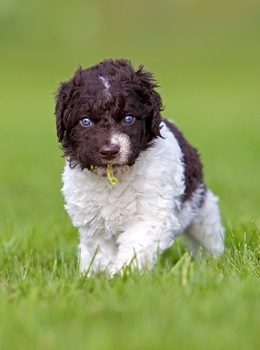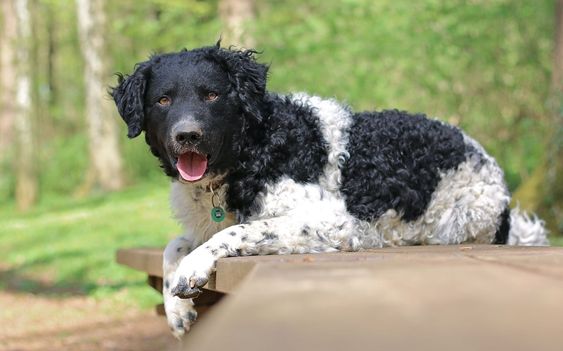Wetterhoun
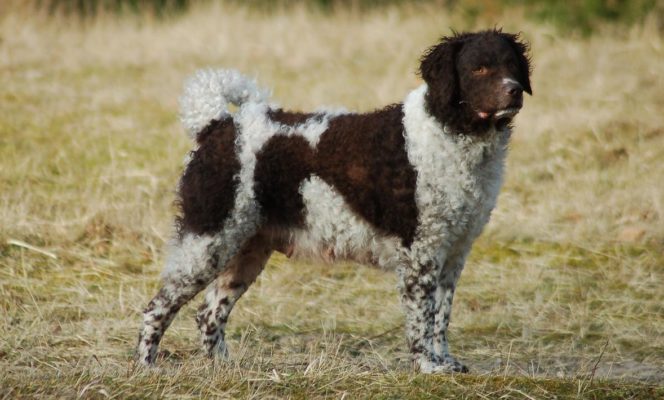
The Wetterhoun is a real family man. He is great friends with children, even the smallest. He quickly gets used to and becomes attached to the family, protects and defends all members of his family. He has no attitude toward other animals in the same area and does not cause any conflicts. He spends most of his free time resting.
Table of Contents
Breed Information
| Another Name | Frisian Water Dog |
| Origin | Netherlands |
| Height | Males 59 cm Females 55 cm |
| Weight | 25-32 kg |
| Fur | Medium, thick, dense, with curls |
| Color | Black, brown, black and white, brown and white |
| Lifespan | 10-12 years |
| FCI Classification | Retrievers – Flushing Dogs – Water Dogs |
| Group | Watchdogs |
| Price | $500 |
Breed Photos
Origin History
The origin of the Wetterhoun is long; it is believed that it has a common ancestor with the water spaniel and the English water dog. The pet’s homeland is the Netherlands, from the second name, the Dutch Water Dog. They used to be used to protect farms, farms and for hunting wildlife. Because Wetterhoun is an excellent swimmer, it hunted otters and ferrets.
World War II harmed the development of the breed. The dogs were on the verge of extinction. But after a few years, scientists managed to restore the Wetterhoun.
The first official registration of the breed was in 1942, after which there was soon a club of Wetterhoun lovers. Now the dogs are trendy in their homeland, but unfortunately not so well known outside it.
Appearance
The Wetterhoun is of medium size, sturdy build, square in shape. The head is large, the muzzle tapering toward the end. The skin is tight against the body.
The nostril is usually dark in color, and the nostrils are wide open. The eyes are medium-sized, oval, brown, or varying shades of light brown to black. Ears are set high, medium length, covered with wool.
There is sexual dimorphism: Males are usually larger than females. The height of males is about 59 cm and females about 55 cm. Weight ranges from 25 to 32 kg.
Wetterhoun hair is medium, thick, soft to the touch, looking dense and stiff. Color can be black, brown, black and white, white and blue, and others. In some places, the coat may have curls of stiff tufts of hair. A characteristic feature of the Wetterhoun is a spiral tail, which rises above the croup.
Character
The Wetterhoun is a real family man. He is great friends with children, even the smallest. He quickly gets used to and becomes attached to the family, protects and defends all members of his family. He has no attitude toward other animals in the same area and does not cause any conflicts. He spends most of his free time resting. Therefore, it does not require too active loads. However, he is an excellent protector of the house, to strangers treats warily and fiercely. Independent spirit and independence need a strong and experienced leader nearby. Therefore, it is not recommended to bring this dog to beginners. Because they will not miss the moment of manipulation and control.
Bad weather is not afraid of the Wetterhoun: he can hunt in the rain and the snow. The coat perfectly protects the dog from bad weather.
Care
Representatives of the breed need a lot of free space to spend time. Therefore, it will be difficult for them to live in a city apartment, in an aviary, or on a leash. The yard of a private home is best. It is necessary to walk the dog twice a day and not forget about the leash because they can chase birds, chase cats, or small dogs.
Grooming depends on the purpose of maintenance of a dog – if a Wetterhoun participates in the exhibition, fur needs to be trimmed about once every six months, combed out, and washed constantly. If this is not done, there will be tangles, which are difficult to comb out. A big advantage of wool is its inability to shed.
It is important to remember to check the eyes, ears, and mouth about once a week. And if there is dirt there – you should clean them gently with a cotton pad or tissue. Nails should preferably be trimmed once a month, as they are not always cut back naturally.
Training
From an early age, the Wetterhoun needs socialization, as it can be a bit aggressive. Dogs of this breed are easy to train. They learn commands quickly and please their owners if they feel their master’s authority and leadership position. They should be trained regularly and on schedule. It is worth getting your dog used to a proper schedule and training from childhood. The loads should not be very strong since this dog does not tolerate coercion. It is important to remember the individuality and autonomy of the Wetterhoun and to be patient.
Common Diseases
Wetterhoun has good health and a strong immune system. He rarely gets sick. But among the diseases that can affect dogs of this breed are epilepsy, hip dysplasia. There may also be hair problems, which is common to all curly-haired dogs.
Nutrition
The diet of the Dutch Water Dog should include meat, vegetables, fruits, cereals. An adult dog should be fed twice a day, morning and evening. Wetterhoun should always have free access to fresh water. Try to diversify the ration and change it from time to time. For example, meat once a week can be replaced by fish, cleaned of bones.
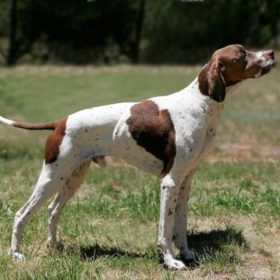 Pointer
Pointer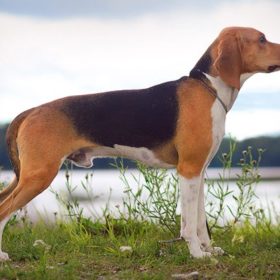 Estonian Hound
Estonian Hound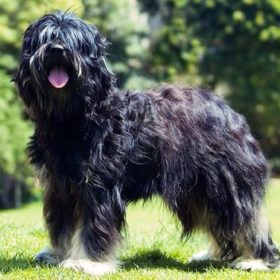 Portuguese Sheepdog
Portuguese Sheepdog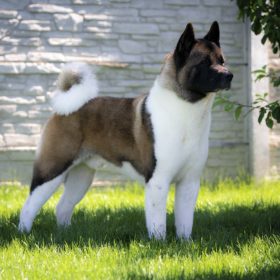 American Akita
American Akita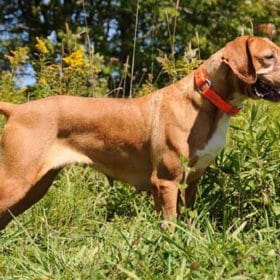 Portuguese Pointer
Portuguese Pointer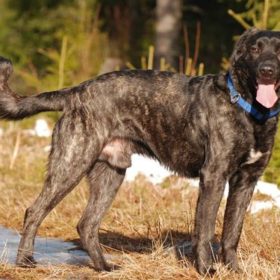 Castro Laboreiro Dog
Castro Laboreiro Dog
